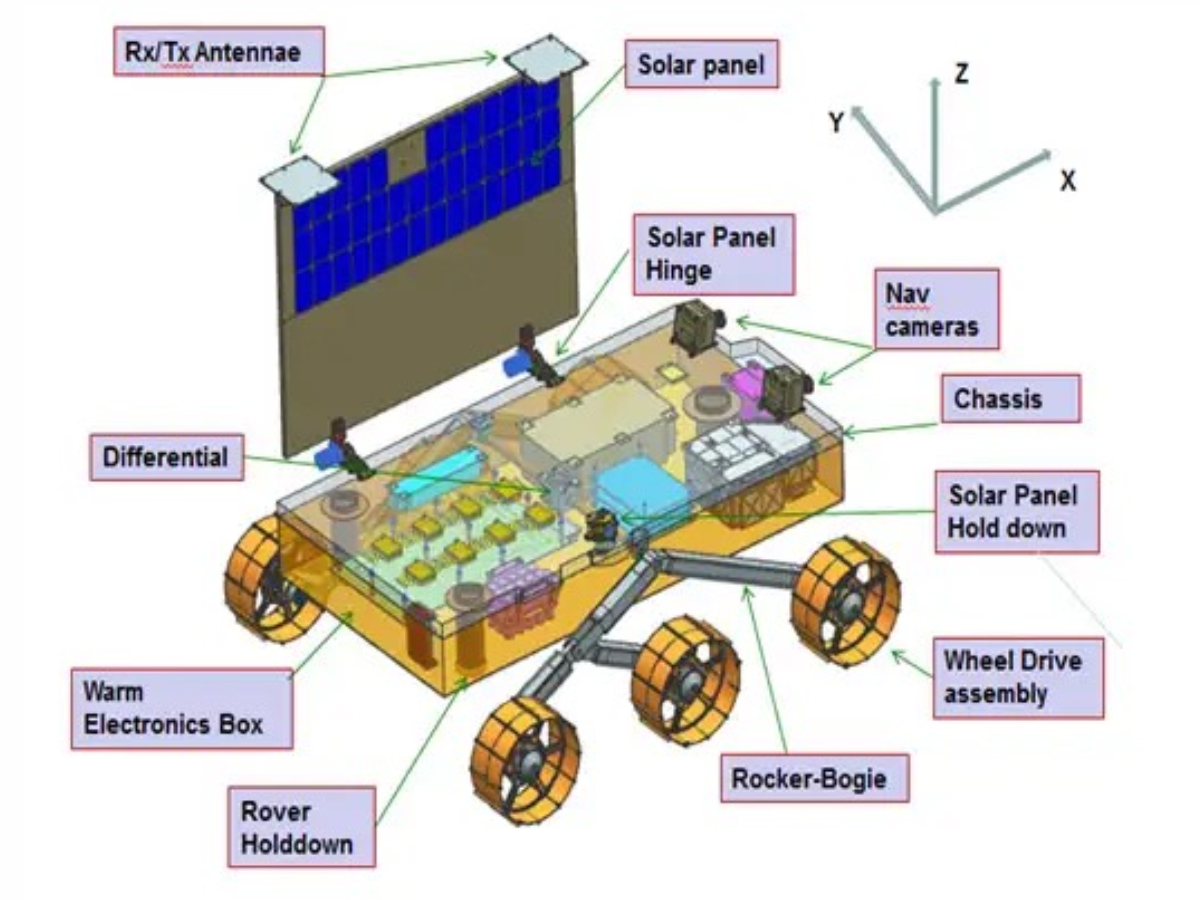Sadly not designed by Land Rover but in no way inferior, the 26kg lightweight Rover certainly does a lot. The Rover has two payloads on board and also has a mission life of one lunar day (14 days) making it last longer than your average vacation. In terms of communication, it uses the lander to communicate with the brains at ISRO.
Objective Payloads of the Rover:
LASER-Induced Breakdown Spectroscope (LIBS) - It derives the chemical composition of the rocks and soil upon the surface. Basically, it shows what stuff the moon is made of.
Alpha Particle X-ray Spectrometer (APXS) - To further find out the elemental combination of the rocks and soil nearby making sure we know what elements the surface consists of.
Overall the Chandrayaan-3 is a very important mission and accomplishment for ISRO and India. The unique location of where the lander has landed allows us to confirm the existence of water or ice on the moon's surface. Along with that, we are also conducting several research missions as seen above. The Chandrayaan-3 mission is a milestone as it now will pave the way for ISRO to conduct further missions into space starting the exploration of the final frontier.



